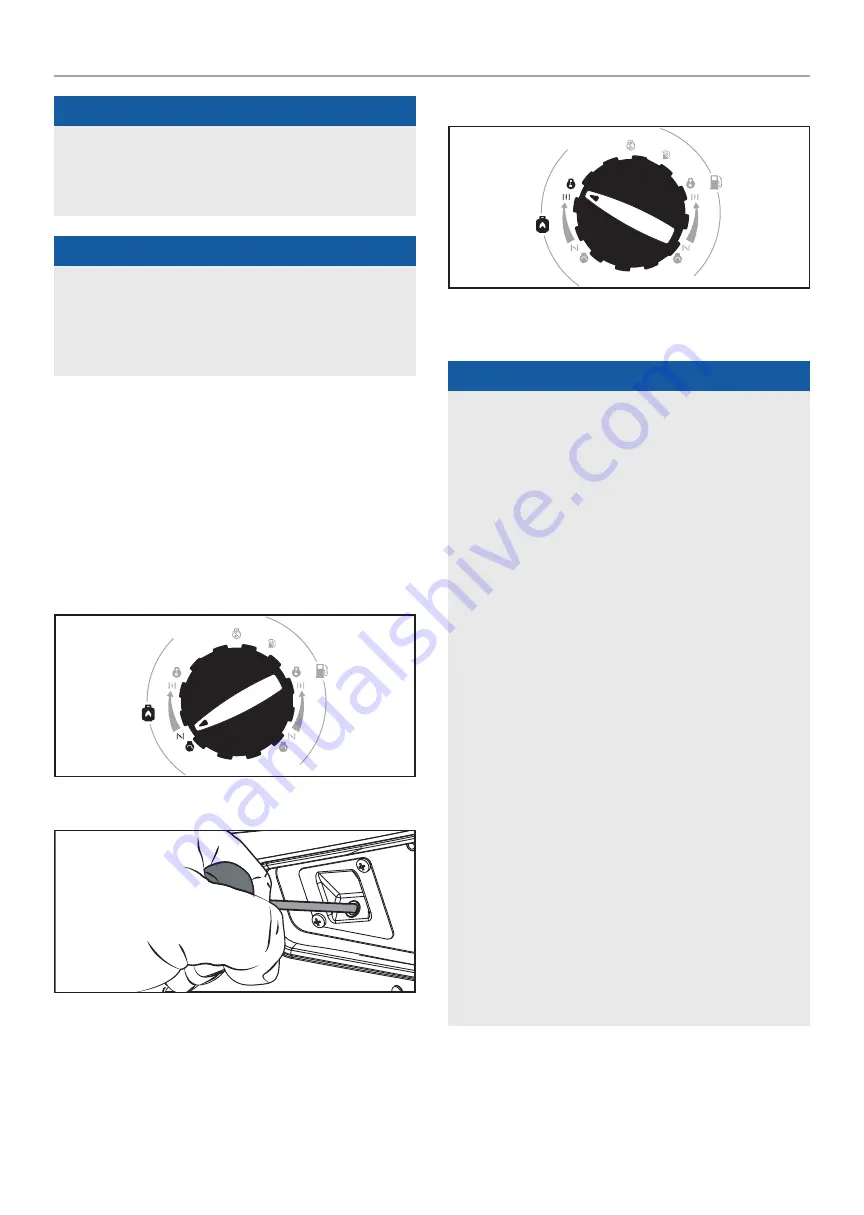
100402 - 2000W DUAL FUEL INVERTER GENERATOR
OPERATION
20
NOTICE
For gas starting in cold ambient <15°C (59°F):
The
choke must be in 100% of the “CHOKE” position for recoil
start procedures. Do not over-choke. As soon as the engine
starts, turn the EZ Start dial to the RUN position.
NOTICE
If the engine starts but does not continue to run make
certain that the generator is on a flat, level surface. The
engine is equipped with a low oil sensor that will prevent the
engine from running when the oil level falls below a critical
threshold.
Starting the Engine: Propane (LPG)
1. Make certain the generator is on a flat, level surface.
2. Disconnect all electrical loads from the generator. Never
start or stop the generator with electrical devices plugged
in or turned on.
3. Open the fuel valve on the propane cylinder.
4. Turn EZ Start dial counterclockwise to the full “CHOKE”
position.
+
-
+
-
5. Slowly pull the starter cord 2-4 times to prime the engine.
6. Move the EZ Start dial to the “RUN” position.
+
-
+
-
7. Pull the starter cord slowly until resistance is felt and then
pull rapidly.
NOTICE
Accumulation of frost on LPG cylinder and regulators is
common during operation and normally is not an indication
of a problem. As LPG vaporizes and travels from the cylinder
to the generator engine it expands. The amount of frost
that forms can be affected by the size of the cylinder, the
amount of LPG being used, the humidity of the air and other
operating conditions.
In unusual situations this frost may eventually restrict
the flow of LPG to the generator resulting in deteriorating
performance. For example, if the cylinder temperature is
reduced to a very low level then the rate at which the LPG
vaporizes is also reduced and may not provide sufficient
flow to the engine. This is not an indication of a problem
with the generator but only a problem with the flow of LPG
from the cylinder. If generator performance seems to be
deteriorating at the same time that ice formation is observed
on tank valve, hose or regulator then some actions may be
taken to eliminate this symptom.
In these rare situations it can be helpful to reduce or
eliminate the cold fuel system effects by doing one of the
following:
–
Exchanging fuel cylinders to allow the first cylinder to
warm up, repeating as necessary.
–
Placing the cylinder at the end of the generator near
the handle, where engine fan air flows out from the
generator. This air is slightly heated by flowing over the
engine. The cylinder should not be placed in the path of
the muffler outlet.
–
The cylinder can be temporarily warmed by pouring
warm water over the top of the cylinder.














































